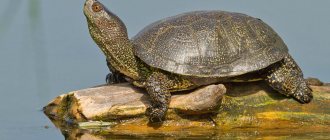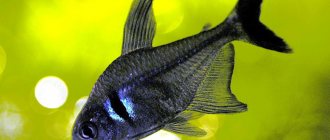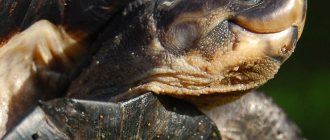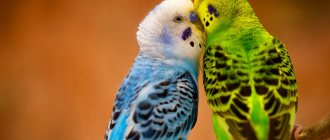Representatives of this breed are freshwater turtles belonging to the genus Swamp turtles. They successfully adapted to life in captivity and quickly gained popularity among reptile lovers. And their natural habitat has expanded noticeably - from European territory to northern Africa. The European marsh turtle is an unpretentious reptile that needs certain conditions and nutrition. Future owners, especially those without experience in keeping such animals, should know their characteristics and needs.
General data and description of the breed representatives
The European marsh turtle looks like other reptiles of this species, but at the same time has some characteristic features. It has an oval, low carapace with a slight convexity, the surface of which is smooth, and the connections with the lower part - the plastron - are movable.
Young animals of this breed have a rounded carapace and a weak central keel on the posterior curve of the carapace. The limbs are equipped with elongated, sharp claws, and between the fingers there are small leathery films that increase the area of contact of the limbs with water.
These turtles boast a very long tail. In an adult, the length of the tail reaches 20-25 cm. Nature gave it for a reason - it is actively used when swimming and is an important part of the steering.
Marsh reptiles, in comparison with their land and sea relatives, have very modest sizes. The length of an adult is 12-38 cm, with a weight of 1.5 kg. But such dimensions allow you to keep these reptiles at home without any problems.
In adult turtles, the carapace is colored dark yellow-greenish, brownish-brown or dark brown, almost black. Small yellow spots, dashes, and dots are scattered on the main background. The lower shield is dark brown or yellowish, with dark spots that do not have clear boundaries.
The head , neck, limbs and tail are also dark, they also have yellow spots, but in small quantities. Eyes with yellow, orange or red irises. A peculiarity of representatives of this species is that the edges jaws are smooth and there is no “beak”.
Turtles in their natural environment
The habitat of European marsh turtles is quite wide; they are found in the south, central and eastern regions of Europe, the Caucasus and Asia. Most of the population lives in almost all states that left the Soviet Union.
It is surprising that thanks to research it was possible to find out that representatives of this species were found throughout most of Europe even before the Ice Age. In addition, in some areas, to this day there are residual populations of these reptiles, which are classified as relict.
Kinds
There are 7 main subspecies:
- Emys orbicularis occidentalis - western marsh turtle;
- Emys orbicularis persica - Persian marsh turtle;
- Emys orbicularis galloitalica - Gallo-Italian marsh turtle;
- Emys orbicularis eiselti - Eiselt's marsh turtle;
- Emys orbicularis hellenica - Eastern Mediterranean marsh turtle, Hellenic marsh turtle;
- Emys orbicularis ingauna.
- Emys orbicularis orbicularis is the nominate subspecies.
There are other subspecies of marsh turtles:
- Emys orbicularis luteofusca - golden-black marsh turtle;
- Emys orbicularis colchica - Colchian marsh turtle;
- Emys orbicularis kurae - Kura marsh turtle;
- Emys orbicularis capolongoi - Capolongo marsh turtle;
- Emys orbicularis lanzai - Lanza marsh turtle;
- Emys orbicularis iberica - Iberian marsh turtle;
- Emys orbicularis fritzjuergenobstii - Obst's marsh turtle;
- Emys orbicularis hispanica - Spanish marsh turtle;
- Emys orbicularis orientalis is an eastern marsh turtle.
Subspecies of the marsh turtle differ in size, appearance, as well as location and region of habitat.
Lifestyle and behavioral characteristics of marsh turtles
Forest, steppe and forest-steppe areas with natural fresh water bodies are more suitable for these inhabitants. They love to settle in lakes, ponds, swamps, slow-flowing rivers and large water canals.
The most convenient for reptiles are reservoirs of natural origin located on flat terrain - with gently sloping banks and shallow areas, abundantly overgrown with plants and well heated. But you can also find the European marsh turtle in the mountains, where there are small bodies of water.
With the help of experiments, it was possible to prove that representatives of this species are capable of surviving for 2 days at a water temperature of 18°C and the absence of air. This confirms their high viability. During the mating season, adult turtles, ready to breed, can crawl out of the water and set off on a 300-500-meter journey inland.
Swamp turtles are excellent swimmers and divers, and they are also capable of staying under water for a long time, rising to the surface every 10-15 minutes. These animals are semi-aquatic reptiles and are most active during the daytime. They love to crawl onto land or islands and bask in the sun's rays.
Reptiles spend all the time that is not spent resting in search of food - they can eat all day long. And at night they go to sleep at the bottom of the reservoir.
How long do these turtles live?
Representatives of several species of marsh turtles, including European ones, are found in the natural environment. They differ not only in external characteristics, but also in behavior, lifestyle, food preferences, and life cycle duration.
The most common representatives of swamp reptiles are turtles of the European species. But their life expectancy varies noticeably, as it largely depends on the conditions in which the animal lives and territorial characteristics.
All individuals that live in central Europe can live up to half a century, and for reptiles from Ukrainian and Belarusian reservoirs, the life span rarely exceeds 40 years. At home, these pets live no more than 25 years.
Lifespan
Turtles are truly long-lived even by our human standards, because they live many times longer than us humans. So the average life expectancy of turtles in natural conditions can be 180-250 years.
The oldest turtle in the world, named Jonathan, lives on the island of St. Helena and remembers (probably) the times of Napoleon, because the former emperor of France lived here in exile for some time.
Conditions for keeping a marsh turtle at home
An owner who decides to get not a dog or a cat, but a marsh turtle, must have certain knowledge about representatives of this species and their needs. It is worth knowing about the following features of keeping reptiles:
- It is important to consider that caring for young, adult and elderly animals is different;
- you should take a serious approach to selecting a tank in which your pet will live;
- it is necessary to pay attention to maintaining water and air parameters, determining a balanced diet and hygiene of the reptile;
- aquarium decor is another important aspect with which you can bring the conditions of an artificial reservoir closer to natural ones; turtles need abundant vegetation, driftwood, an island for rest and other elements.
How to choose a suitable home for your pet
A couple of adult turtles of this breed require a fairly spacious tank with a volume of more than 300 liters. 1/3 of the total area of the aquaterrarium is allocated to an island of land, crawling out onto which the reptile will rest, basking in the sun. The maximum suitable container parameters are length 150 cm, width 60 cm, height 50 cm.
It is best to keep a marsh turtle in a fenced artificial pond located in the local area. The pond in the garden should be located in an area that receives direct sunlight most of the time and constantly warms the water to the optimal temperature.
An outdoor pond must have shallows and platforms for reptiles to rest and take solar treatments. These aquatic inhabitants use the shoreline for laying eggs, so it must consist of sand. In the south of Russia, based on weather conditions, pets can be placed in a garden pond from March and left there until late autumn. In such conditions, the reptile’s body naturally prepares for the winter.
Turtles overwinter at a temperature of 4°C, so zoologists advise giving your pets an “artificial winter” in a regular household refrigerator. But this applies only to outdoor inhabitants; aquarium reptiles do not need to hibernate, since the ambient temperature does not drop to such levels.
Land zone
It is needed so that reptiles can rest, warm up and dry out their shells.
The optimal temperature in the area of a land island is considered to be 30–35 degrees above zero, which is achieved by installing an ordinary incandescent lamp over this area.
It should be placed at a height of 25–30 cm from the surface of the land so that the animal does not receive burns. In addition, you should install a small ultraviolet lamp.
The fact is that UV rays promote the production of calcium in the turtle’s body, which is vital for the proper formation of the shell.
Many experts recommend feeding the animal on such an island, gradually accustoming it to this. If you achieve this “land” method of feeding, the water will maintain its purity longer.
How to care for and maintain hygiene of reptiles
First of all, you need to take care of the cleanliness of the water in the tank. Turtles are not the cleanest creatures, they love to eat sloppily in the water and leave a large amount of waste products in it.
The water quickly becomes dirty and cloudy, its flora is pathogenic, putrefactive, and when living in it, reptiles often get sick. Most often, turtles develop eye and skin diseases. To avoid such difficulties, you should equip the aquaterrarium with a powerful and effective filter, which has a large volume and creates a weak current.
To make the process of cleaning the tank as easy as possible and not cause much trouble, you can reduce the amount of decor and reduce the thickness of the soil material under water.
Video
And finally, here is an interesting documentary about turtles.
Author: Pavel Chaika, editor-in-chief of Poznavaika magazine
When writing the article, I tried to make it as interesting, useful and high-quality as possible. I would be grateful for any feedback and constructive criticism in the form of comments on the article. You can also write your wish/question/suggestion to my email [email protected] or Facebook, with respect, the author.
Author page
Nutritional Features
In nature, turtles are unpretentious and omnivorous; they often eat small invertebrates. Their diet is also supplemented by insects that live in water and on land. Reptiles consider dragonflies, mosquitoes and other living creatures flying over water bodies to be a real delicacy. Swamp turtles do not disdain small snakes, chicks and even carrion.
When kept in captivity, you should not focus on the omnivorous nature of your pets. You should carefully approach the issue of feeding reptiles; the diet may consist of the following components:
- lean fish
- liver;
- crustaceans and arthropods, including worms and beetles;
- It is best to put live fish into the tank.
Turtles are essentially predators, so 3/4 of their menu should consist of animal food. But for balance, they must also eat plant ingredients, including dry supplements. But it is advisable to give animal food live or frozen. Reptiles happily eat pieces of vegetables, fruits, herbs, and algae.
In addition, you can purchase special complementary foods at pet stores that are suitable for animals of this species. Young reptiles during the period of active growth and pregnant females are fed once a day, and adult individuals are given food once every 2 days.
Age determination
The age of swamp turtles, like other species, is determined by the number of growth rings on the carapace. It should be taken into account that in the first or second year of life, 1 ring appears within 3-6 months. After two years, one ring is equivalent to one year of existence.
In nature, growth occurs noticeably faster than with household maintenance. As a result, by the thickness of the last (outer) rings it is easy and simple to determine how many years the turtle spent in captivity.
Diseases of aquatic reptiles and preventive measures
If you provide the marsh turtle with decent living conditions, you can avoid any problems with its health. She has strong natural immunity and high vitality. Most turtle illnesses are associated with improper housing conditions or poor care. More often than others, the following diseases and pathologies are detected in freshwater reptiles:
- A cold is the result of cooling or keeping your pet in a draft. It manifests itself in the form of irregular, difficult breathing, the appearance of mucous discharge from the nasal passages and oral cavity. The turtle begins to wheeze, refuses to eat, and moves little.
- Rectal prolapse or prolapse of the cloaca (cloacitis) - pathology can occur due to various reasons. Most often it develops against the background of helminthic infestation or prolonged diarrhea. The turtle's cloaca is visible, soil and debris stick to it, and the front limbs may swell.
- Diarrhea - in most cases, is the result of eating low-quality or stale food.
- Nematodosis and cestodosis - tapeworms and roundworms enter the reptile's body from food that has not undergone heat treatment.
- Intestinal obstruction - the main cause is associated with the ingestion of foreign objects - small pebbles, sand, debris. Rarely manifests itself in the form of vomiting, shortness of breath, and neurological disorders.
- Paralysis of various origins.
- Violation or delay in egg laying - a turtle can carry its offspring beyond term due to a narrowing of the birth canal, large egg size, lack of a ready-made nest, and other reasons.
- Infection with ectoparasites - creatures that parasitize the outer surface of the reptile.
In addition, when home furnishings are violated, residents are often injured and their skin is damaged. Often, inexperienced owners of marsh reptiles make a number of mistakes when keeping their pets, which leads to deformation of the armored scutes. More often, this occurs as a result of a deficiency of vitamin components and calcium during the period of active growth and puberty of the individual.
How do European marsh turtles reproduce?
Males have a longer and thicker tail than females, and a slightly concave plastron. Females lay eggs in depressions in the coastal zone, not far from the reservoir. They bury the clutch with ellipsoidal eggs. Reptiles living in an aquaterrarium often give birth to offspring. They reach sexual maturity at 6-8 years of age.
A few days before laying eggs, the expectant mother becomes nervous, anxious, finds it difficult to sit still, and tries to leave the aquarium. You can also catch a turtle digging a hole on an island of land. The babies that have just been born are black in color with a faint yellow pattern. The first food of juveniles is the composition contained in the yolk sac, which is located on the abdomen.
As is the case with other turtles, the sex of representatives of this breed depends on the temperature regime. If during the incubation period the indicator remains at 28°-30°C and above, the newborn turtles turn out to be females. At low temperatures, males appear. With intermediate values, you can get heterosexual offspring.
Reproduction
The mating season for turtles occurs at different times depending on the species. However, in all turtles it occurs in a similar way: the males stage real battles for the right to mate with the female. How do turtles fight? It’s very simple, the land ones try to turn the enemy over with a blow from their shell, and the water ones hit and bite each other with their beaks. Only after driving away a potential rival does the male turtle begin courting his “lady,” forcing her to take a position convenient for the actual mating.
Some time after mating, the female turtle lays spherical or ellipsoidal eggs, from which small turtles will be born. Turtles dig special holes for their eggs, and sometimes even use the nests of crocodiles.
From 1 to 200 eggs can be laid at a time (depending on the species). Also, the duration of the incubation period can last from 2 months to six months or more.
After hatching, small turtles begin to struggle for survival; not all of them will survive to adulthood; young turtles are an excellent target for various predators, especially birds of prey.
How much do turtles of this breed cost and where can they be purchased?
The European marsh turtle has become widespread due to its relative ease of maintenance and unpretentiousness. Another positive quality of these reptiles is their very reasonable price. You can buy such an unusual pet for an average of 1000-2000 rubles, and we are talking about a young individual that can live in an aquarium for a quarter of a century!
When purchasing a turtle, you should give preference to individuals born in captivity. This will reduce the risk of your reptile being sick or infested with parasites. And besides, it adapts much better to new conditions. In any case, before placing a new pet in a general tank, it is recommended to keep it in a quarantine tank.
European marsh turtles are not the rarest representatives of the species, but they not only settled in new territories, but also successfully migrated to aquaterrariums. Today, the number of fans of these reptiles is increasing, because such a pet, although it requires special conditions, does not need walking, does not smell and does not shed. And besides, it can please its owner for decades.











